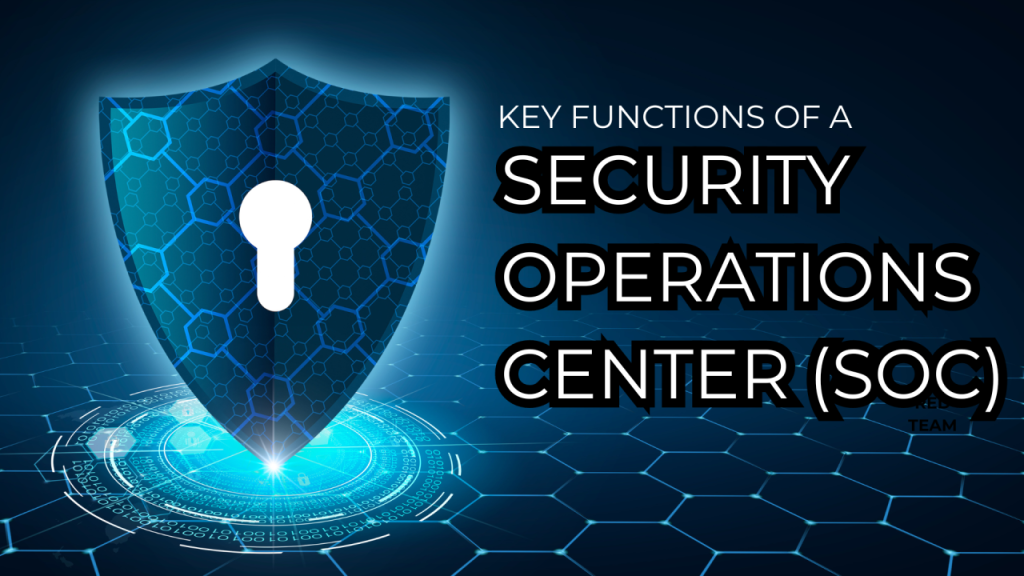Key Functions of a Security Operations Center (SOC)
Key Functions of a Security Operations Center (SOC)

- Blog
- July 29, 2024
A Security Operations Center (SOC) plays a pivotal role in the cybersecurity framework of any organization. By leveraging advanced technologies and expert personnel, a SOC ensures the continuous protection of digital assets. Here are the key functions of a SOC:
1. Prevention & Proactive Monitoring
One of the core functions of a SOC is to prevent security incidents before they occur. This involves continuous monitoring of networks, systems, and data to detect potential threats early. Proactive monitoring helps in identifying vulnerabilities and unusual activities, allowing the SOC team to mitigate risks before they escalate into serious issues.
2. Security Intelligence
Security intelligence is crucial for understanding the threat landscape. A SOC gathers and analyzes data from various sources, including threat intelligence feeds, to stay informed about the latest attack vectors, malware, and hacker techniques. This intelligence is used to enhance the organization’s defensive measures and ensure that security protocols are up-to-date.
3. Recovery & Remediation
In the event of a security breach, the SOC is responsible for swift recovery and remediation. This involves identifying the root cause of the incident, containing the breach, and implementing measures to prevent future occurrences. Effective recovery and remediation minimize the impact of the breach on the organization’s operations and reputation.
4. Security Posture Refinement
Continuous improvement of the organization’s security posture is another critical function of a SOC. This involves regularly reviewing and updating security policies, procedures, and technologies. By refining the security posture, the SOC ensures that the organization remains resilient against evolving threats.
5. Alert Management
SOC teams are tasked with managing security alerts generated by various security tools. Effective alert management involves filtering out false positives and prioritizing genuine threats. This ensures that the SOC team can focus on the most critical incidents and respond promptly to potential security breaches.
6. Incident Response
When a security incident occurs, the SOC is the first line of defense. The incident response function involves identifying, analyzing, and responding to security incidents in real-time. A well-coordinated incident response minimizes damage and facilitates quick recovery, maintaining the integrity and availability of the organization’s digital assets.
7. Log Management
Log management is essential for tracking and analyzing security events. A SOC collects and manages logs from various systems and applications to provide a comprehensive view of the security landscape. Analyzing these logs helps in identifying patterns, detecting anomalies, and conducting forensic investigations post-incident.
8. Compliance
Ensuring compliance with regulatory requirements and industry standards is a key responsibility of a SOC. This involves implementing and maintaining security controls that meet legal and regulatory obligations. Compliance not only protects the organization from legal penalties but also enhances its reputation and trust with customers and partners.
Conclusion
A Security Operations Center is integral to an organization’s cybersecurity strategy. By encompassing functions such as prevention, intelligence, incident response, and compliance, a SOC provides robust protection against cyber threats. Investing in a SOC is a proactive step towards safeguarding an organization’s digital assets and maintaining operational resilience.
Enhance your cybersecurity posture with our expert Security Operations Center (SOC) services. Discover how our comprehensive SOC solutions can protect your organization from evolving cyber threats.